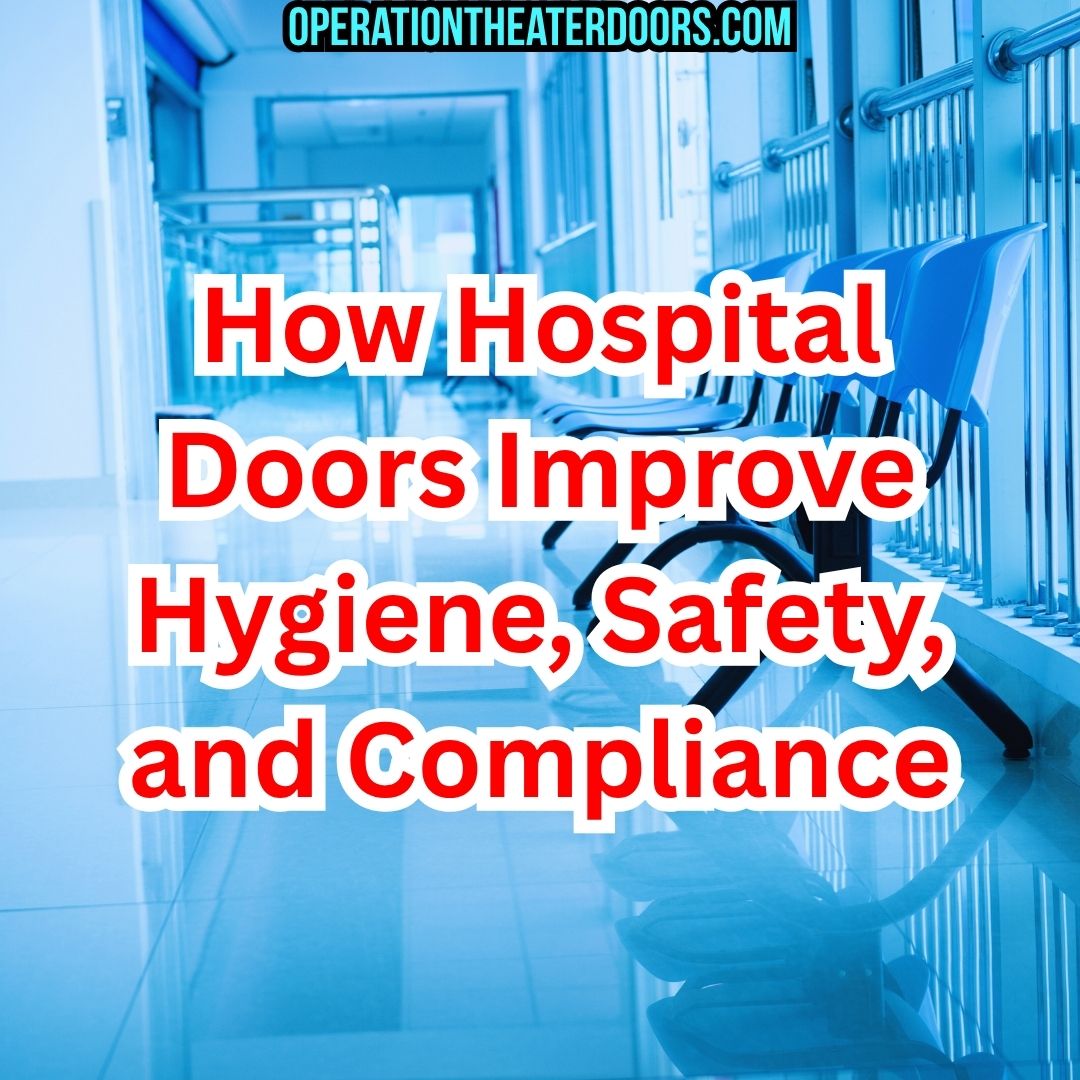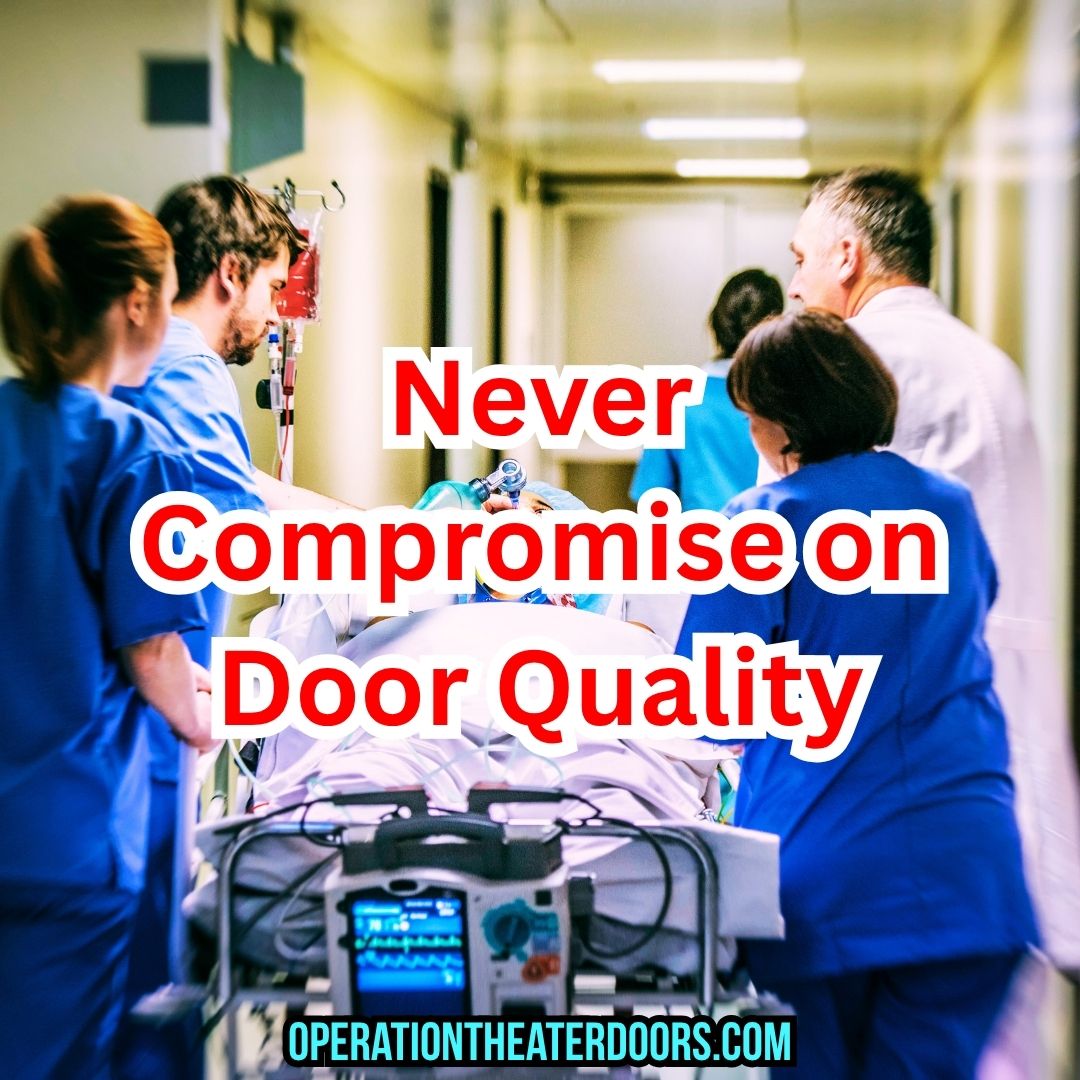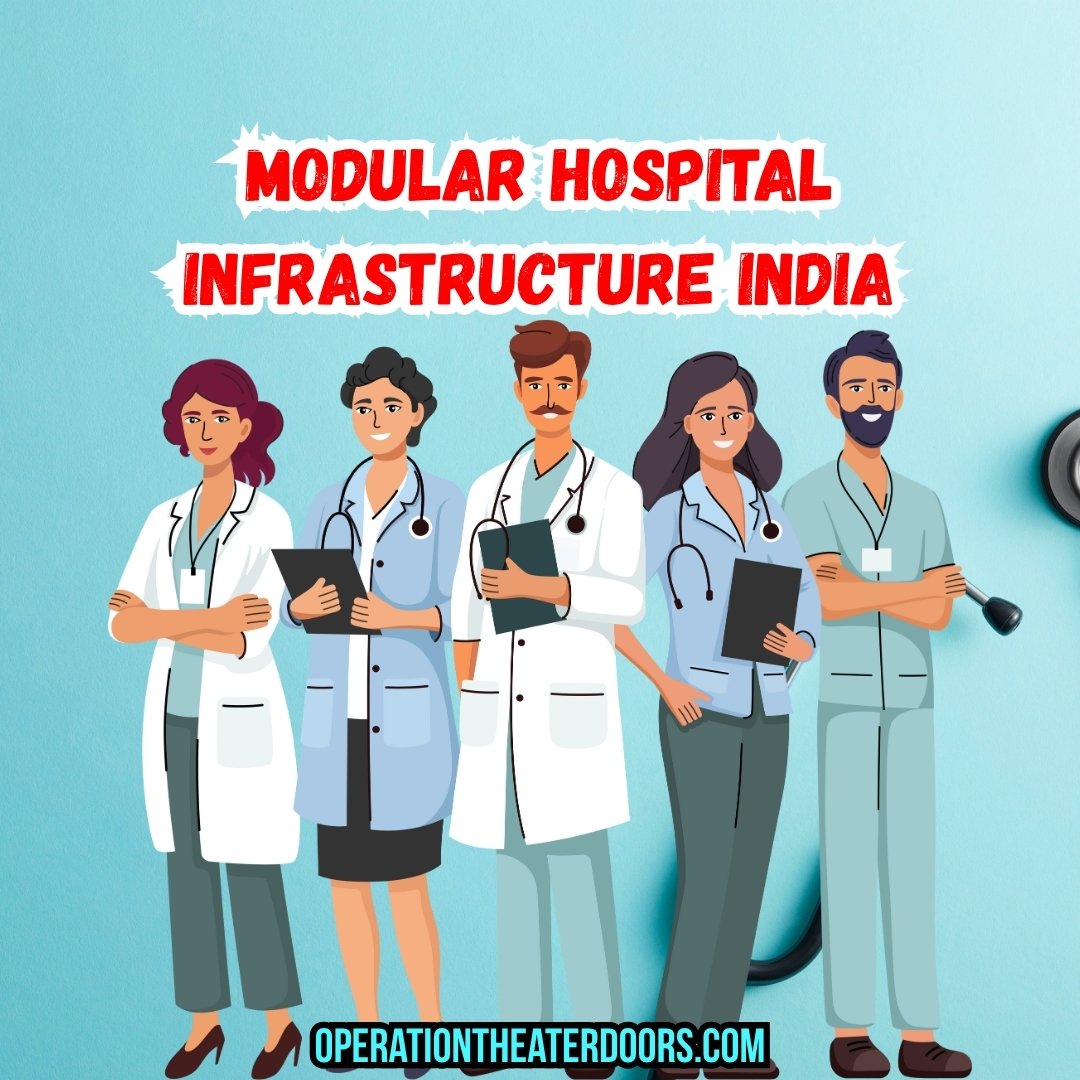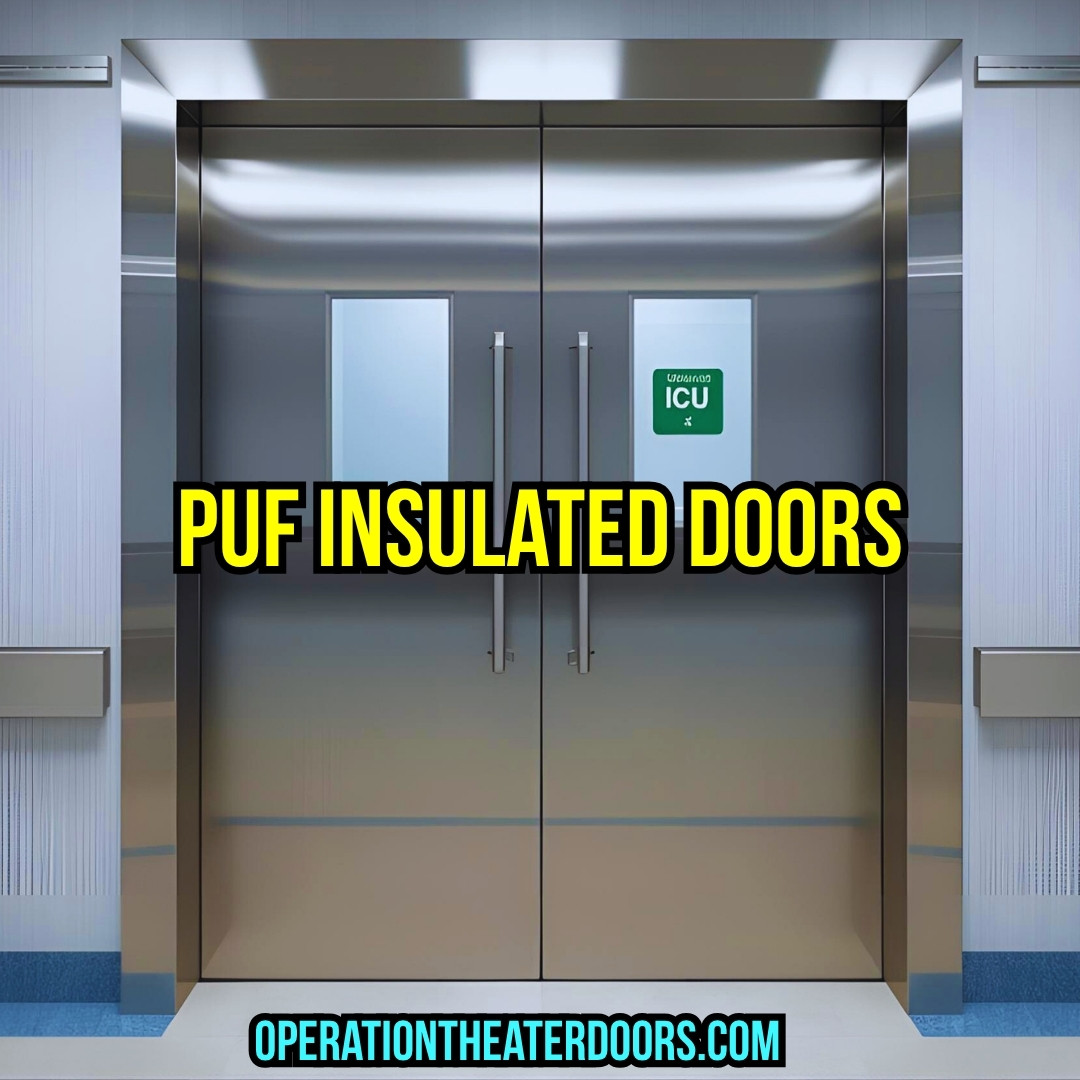
When hospitals and healthcare facilities invest in new infrastructure, decision-makers often prioritize medical equipment, HVAC systems, and staff planning. However, one of the most overlooked yet critical elements of patient safety and operational efficiency is the selection of ICU doors, operation theatre doors, cleanroom doors, and PUF insulated doors.
Choosing the wrong type of hospital doors can compromise infection control, increase maintenance costs, delay essential accreditations such as NABH or WHO-GMP, and even endanger lives during emergencies. In India—particularly in fast-growing healthcare hubs like Ahmedabad, Gujarat—hospitals, diagnostic labs, pharma units, and IVF centres are expanding rapidly. This makes the choice of doors for ICU setups, modular operation theatres, and turnkey healthcare projects more crucial than ever.
Hospital doors are not just entry points; they are vital components of patient safety, infection control, and compliance with healthcare regulations. Whether it is ICU doors, operation theatre doors, cleanroom doors, or PUF insulated doors, every decision directly impacts hygiene, airflow, temperature control, and emergency safety.
Mistakes Hospitals Make with ICU Doors
Overlooking Hermetic Sealing
One of the most common mistakes is installing regular swing doors in ICUs. Such doors allow airborne particles to move freely, increasing the risk of cross-infection. For units where critical patients are treated, this can be disastrous.
Better Choice: Hermetically sealed ICU doors with airtight properties. They maintain controlled airflow and reduce infection risks.
Ignoring Door Automation
Many hospitals in India still use manual ICU doors. This requires staff to touch handles frequently, leading to contamination.
Better Choice: Automated sliding ICU doors with sensor activation. These support touch-free entry, vital for infection control.
Not Considering Patient Transfer Needs
Narrow ICU doors make it difficult to move stretchers and ICU beds. Many hospitals underestimate the importance of door width during procurement.
Better Choice: Wide, custom-sized ICU doors designed for smooth patient transfer, meeting NABH requirements.
Learn more about advanced ICU Doors. For standards, consult NABH Guidelines.
Common Mistakes in Choosing Operation Theatre Doors
Using Generic Doors Instead of Modular-Compatible Ones
Regular hospital doors often fail in modular OTs. They don’t align with PUF panels, leak air, and disturb the pressure differential required for sterile conditions.
Better Choice: PUF insulated OT doors designed for modular theatres. These doors integrate seamlessly with wall panels and HVAC systems.
Neglecting Hermetical Sliding Systems
Swing doors are cheaper but unsuitable for critical OTs where sterility is paramount. They generate turbulence when opened and occupy more space.
Better Choice: Hermetic sliding OT doors that maintain laminar airflow and save space inside compact operating theatres.
Overlooking Antimicrobial Surfaces
Some OTs still use laminated or painted wooden doors, which absorb moisture and harbour bacteria.
Better Choice: HPL or stainless-steel OT doors with antimicrobial coatings for long-term hygiene.
Explore specialized Operation Theatre Doors. For infection prevention standards, check the WHO Guidelines.
Fire Exit Door Mistakes in Hospitals
Treating Fire Exits as Formalities
Some administrators assume any metal door can serve as a fire exit. This often results in non-compliance with fire safety laws.
Better Choice: Install certified fire-rated doors with panic bars, smoke seals, and clear exit signage. These ensure both safety and audit approval.
Ignoring Accessibility in Emergencies
Narrow or locked fire exit doors delay evacuation. This is especially dangerous in ICUs and OTs.
Better Choice: Fire exit doors that are wide enough for stretchers and designed with quick-release mechanisms.
Check hospital-grade Fire Exit Doors. For standards, refer to the Ministry of Health & Family Welfare.
Cleanroom Door Selection Errors
Using Regular Hospital Doors in Controlled Environments
Cleanrooms in pharma, IVF labs, and diagnostic centres require doors that maintain differential air pressure. Installing generic hospital doors can cause dust accumulation and contamination.
Better Choice: Flush cleanroom doors with antimicrobial finishes and GMP-compliant designs.
Not Considering Pressure Balancing
Incorrect door designs compromise pressure balancing between clean and controlled zones.
Better Choice: Specialized air-tight cleanroom flush doors with pressure-sealing properties.
Discover advanced Cleanroom Doors. For compliance, review WHO GMP Guidelines.
PUF Insulated Doors & Panels: Mistakes to Avoid
Cutting Costs with Laminates Instead of PUF
Hospitals often settle for laminated doors to reduce budgets. However, these deteriorate quickly, absorb moisture, and compromise HVAC efficiency.
Better Choice: PUF insulated doors that provide thermal stability, durability, and compliance with NABH and GMP.
Forgetting HVAC Compatibility
OTs and ICUs need stable air conditioning. Doors that don’t insulate properly lead to energy loss and higher operating costs.
Better Choice: PUF insulated doors that integrate seamlessly with HVAC systems to optimize airflow.
Learn more about PUF Insulated Doors. For facility requirements, check GMP Guidelines by CDSCO.
Materials & Durability: Where Hospitals Go Wrong
Choosing Wooden or Low-Grade Laminates
Wooden doors swell with moisture and harbour germs. Laminates chip easily, requiring frequent replacement.
Better Choice: Stainless steel, powder-coated steel, or HPL hospital doors—durable, smooth, and easy to sanitize.
Ignoring Corrosion Resistance
In humid or coastal regions, poorly coated steel doors rust quickly.
Better Choice: Doors with anti-corrosion coatings or stainless steel finishes.
Learn more about Modular OT Setups. For global guidance, check WHO Healthcare Materials Guide.
Compliance & Safety Oversights
Waiting Until Inspections to Address Compliance
A common mistake is delaying door upgrades until NABH inspections. This leads to hurried purchases and failed compliance checks.
Better Choice: Integrate NABH and WHO compliance in the design phase itself.
Ignoring Fire and Emergency Standards
Many projects ignore emergency exit requirements until the last moment.
Better Choice: Include fire-rated and hermetic doors in early planning to avoid rework.
Read more about ICU Setup Services. For regulations, see NABH Accreditation Standards.
Customization & Modular Planning Mistakes
Installing Non-Customizable Doors
Hospitals often install standard-size doors without considering future expansions.
Better Choice: Modular, customizable doors—sliding, swing, hermetic, or automated—that can adapt to new setups.
Ignoring Turnkey Integration
Some facilities buy doors separately, leading to mismatches with HVAC, cleanroom panels, and flooring.
Better Choice: Partner with turnkey healthcare solution providers who offer integrated modular OT and ICU solutions.
Discover more about Turnkey Projects. For health infrastructure references, see WHO Health Systems Infrastructure.
Local Importance: ICU and OT Doors in Ahmedabad & Gujarat
Ahmedabad and Gujarat are rapidly emerging as healthcare and pharma hubs. Facilities such as Civil Hospital Ahmedabad, Apollo Hospitals, and Zydus Hospitals have invested in PUF insulated OT doors, hermetical ICU doors, and cleanroom flush doors.
Local pharma companies and diagnostic labs also demand GMP-compliant solutions. For them, choosing the wrong supplier can delay regulatory approvals and inflate energy bills.
Working with an experienced ICU door manufacturer in Ahmedabad ensures faster service, compliance with Indian conditions, and smoother NABH approvals.
Explore Cleanroom Solutions. For state-level standards, see the Gujarat Health Department.
FAQs
1. What makes a hospital door NABH compliant?
A NABH-compliant hospital door must have smooth, non-porous surfaces, be easy to clean, and ensure airtight sealing. It should also allow safe patient transfer.
2. Which material is best for ICU doors in India?
PUF insulated, hermetically sealed HPL or stainless-steel ICU doors are ideal. They ensure durability, hygiene, and modular ICU compatibility.
3. What is the difference between cleanroom doors and hospital doors?
Cleanroom doors are airtight and pressure-controlled for contamination-free environments. Regular hospital doors lack these specialized features.
4. How do PUF insulated doors improve infection control?
They maintain thermal and pressure balance in OTs and ICUs, reducing microbial growth and improving HVAC efficiency.
5. Why are hermetical doors preferred in modular OTs?
They provide airtight sealing, prevent air turbulence, and support sterile laminar airflow in operating theatres.
6. Can fire exit doors be customized for hospitals?
Yes. Fire exit doors can be customized with panic bars, smoke seals, and stretcher-friendly widths.
7. Are modular OT doors different from standard hospital doors?
Yes. Modular OT doors are airtight, GMP-compliant, and integrate with PUF panels, unlike regular doors.
8. Why should hospitals in Ahmedabad buy from local door manufacturers?
Local manufacturers ensure faster delivery, easier after-sales service, and solutions customized to Gujarat’s climate and compliance needs.
Final Thoughts
Hospital infrastructure is incomplete without the right choice of ICU doors, OT doors, cleanroom flush doors, PUF insulated doors, and fire exits. Mistakes in selection can compromise infection control, energy efficiency, and compliance.
Hospitals, diagnostic labs, IVF centres, and pharma units in Ahmedabad and Gujarat must prioritize certified, modular-compatible, and durable solutions.
For turnkey healthcare infrastructure, AUM Industries provides trusted solutions—from modular operation theatres to ICU setups—backed by compliance, innovation, and long-term reliability.
Reach out through Contact Us or explore AUM Industries for end-to-end hospital infrastructure solutions.






